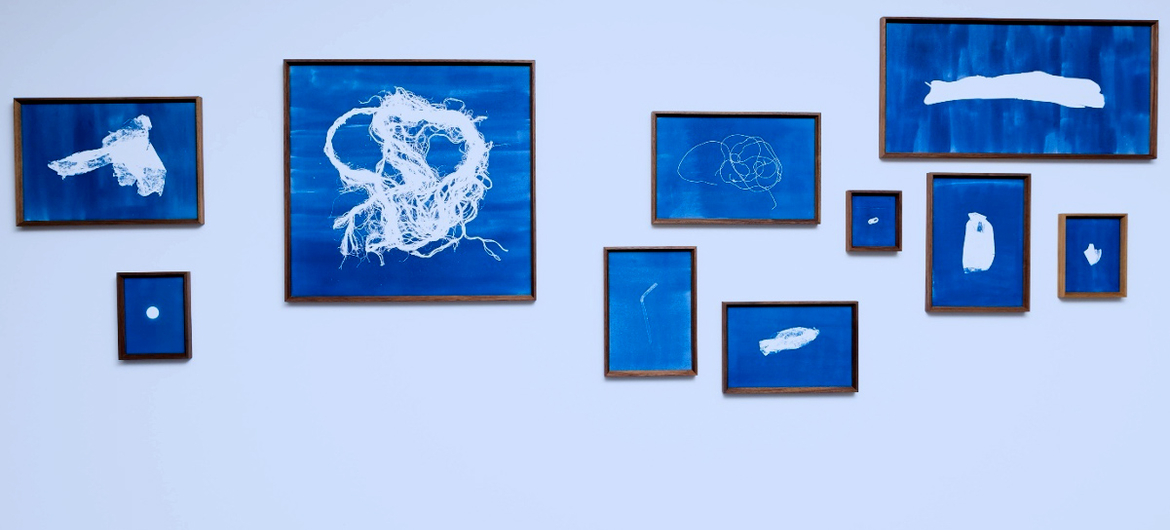Year: 2018
Material /Technique: Cyanotype prints mounted on aluminum.
Inspired by the approach of archaeology, Suzette Bousema values plastic in the sea as future relics of today’s utensils. The prints are handmade using a technique called cyanotype, giving it the typical blue color. The technique was originally used to make actual size contact prints of plants, like seaweed. Bousema currently uses this technique for plastic waste to emphasize the organic shapes, caused by long presence in the sea. In total, Bousema has translated more than 500 found plastic objects into cyanotype prints and the project is ongoing.
By reproducing every single object she finds, she tries to get a grip on the huge amount of plastic in the sea. While doing this project, she realized that we constantly add new plastics to the plastic soup in the sea, but also that plastic that was made in the 50’s, still exists. Plastic fades in color and breaks up in tiny pieces but it will remain forever. They are future relics.
Health and water are closely interconnected. For Novartis, environmental sustainability is of great importance, and we take our responsibility to protect the environment seriously. We focus with responsible water management programs on reducing our impact on the environment and scarcity of water. Our ambition is to be a catalyst for positive change. We believe that art can help to create awareness amongst our associates and bring across the important message of adopting an environmental sustainability mindset.
Artist
Suzette Bousema (1995-) lives and works in The Hague. She holds a Bachelor of Arts in Photography from the Royal Academy of Art in The Hague (2010). She participated in several exhibitions in Europe, including the United Nations Climate Conference in Madrid in 2019 and the Rotterdam Photo Festival.
Her work aims to visualize contemporary environmental topics. As a starting point, she takes planetary conditions and how that is impacted by humankind; the way humans interfere with nature and how we relate to the Earth on an individual level. By visualizing the beauty of scientific research, her aim is to contribute to already ongoing environmental debates in a positive way. Through art (mainly photography) she tries to gain a better understanding of environmental hyper objects, like climate change or global pollution.
